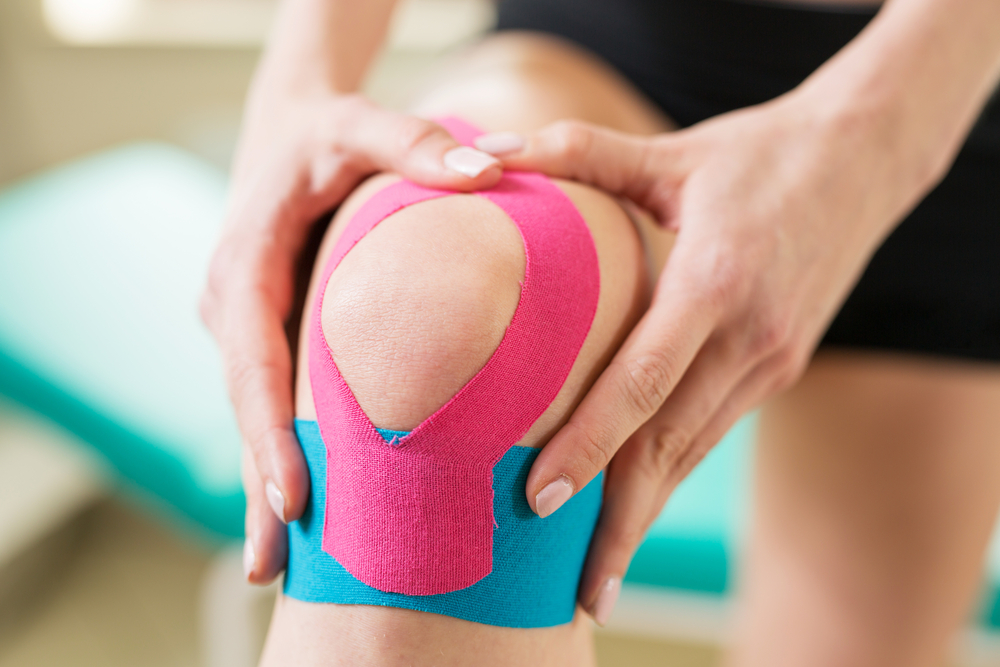 Knee Health
Knee Health
Concept of medical taping has its roots in Japan and Korea, in 70s. The aim of taping is enhancement of self-healing processes. Taping is effective treatment method for curing of strained ligaments, muscle pain and other injuries, as well as for reducing of haematoma and swelling using special tape.
Taping is applying of tape according to health problem and person’s anatomic and functional particularities. Physiotherapist examines the patient, evaluates passive and active movements, and tests the patient according to kinesiologic principles. In the result of examination, the physiotherapist chooses the type of technique and applications basing on patient’s problems.
In taping, kinesiologic tapes are used – these tapes are unilateral, sticky tapes, which are made from natural material with properties (thickness and stretchability) similar to the skin properties. Tape is air and water-permeable, therefore you take a shower and bath with it and even forget that it is on your skin. Natural material allows the skin to breath, so it can be worn from a few days up to several weeks.
When the tape is applied on the skin, the skin slightly rises. In the result of rising the space between the skin and the underlying inflamed tissues increases, reducing the pressure on the blood vessels, lymph nodes and nerve endings in the inflamed area. The blood circulation improves, and the traumatized muscle heals more quickly. As this procedure is painless, it is suitable both for adults and children.
- Taping can help to prevent the pain of muscles and joints, which is caused by overload, trauma or prolonged immobility;
- It activates lymphatic system;
- It affects muscle activity;
- It reduces or improves the tone of muscles;
- Cures professional and occupational diseases that are connected with muscle overload or traumatic postures;
- It is suitable for treatment of knee injuries as well as for release of muscle and joint pain, regardless of whether the pain is acute or chronic;
- It cures strains of ligaments and muscles;
- It improves micro-circulation, reducing haematoma and swelling;
- It improves the stability and functions of joints;
- It improves the functioning of internal organs;
- It is also used for correction of posture.
Taping is used in:
- cases of acute and chronic pain;
- orthopaedics;
- traumatology;
- neurology;
- pediatrics;
- gynecology.
